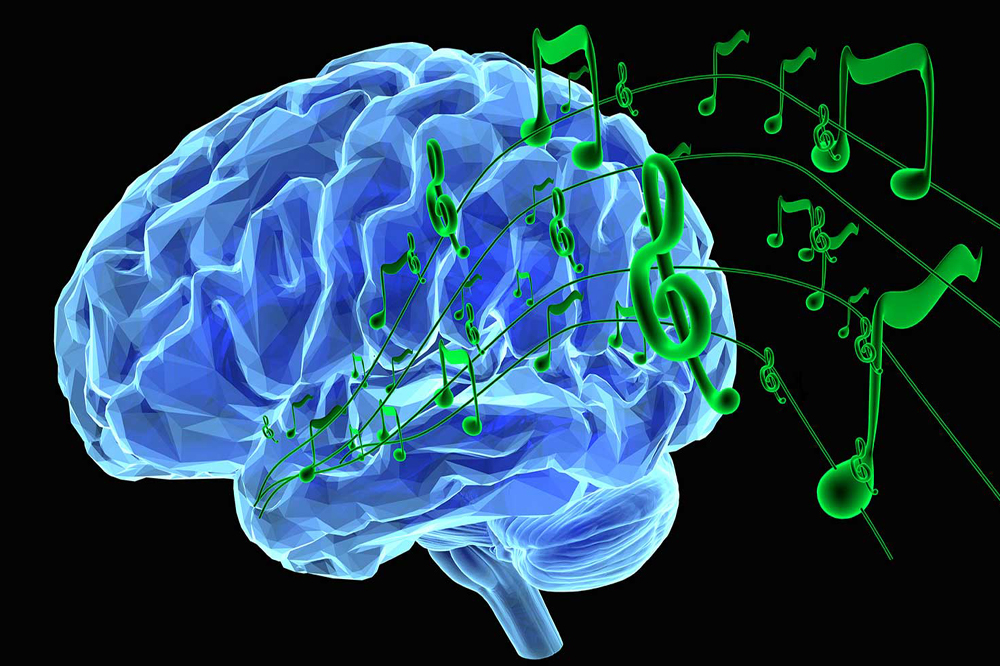
How it works
Music is a joyful gift to our sensory systems and can also be a powerful tool to help improve the physical and cognitive hardships faced by those in the neurodiverse community, such as individuals with autism, stroke, Traumatic Brain Injury, or Parkinson’s disease. Evidence-based research shows that music for therapeutic use can be valuable in working with people who have motor, speech, and cognition challenges. When music is played, it affects the physiological responses in the body such that the brain oscillations and heart rate begin to align with the music, and motor movements will also begin to entrain with the beat of the rhythm.
How does this translate into everyday use? Here are some examples of situations that a music therapist could find themselves supporting. Many neurodiverse individuals have difficulties with their gait; steady rhythmic music is a great accompaniment to use with gait exercises for various challenges like autism, Parkinson’s disease, Cerebral Palsy, etc. Rhythm is a wonderful tool to help facilitate motor movement since rhythm already exists internally in the body’s heartbeat. In rehabilitation situations, the body will tend to automatically move to a beat that mirrors the heart rate; typically, young children will have a “functional tempo” in their bodies of 120 to 132 beats per minute, whereas adults will move slower, at 92 to 100 beats per minute. To facilitate a gait exercise, choose a piece of music favored by the individual that also has the right “beats per minute” count to match their functional tempo. For example, a child with autism who walks with a kinetic stutter might enjoy keeping pace to a children’s tune played at a sprightly tempo. An adult classical music lover recovering from a stroke might not be able to walk at their normal speed, but the music can encourage them to keep pace and increase their muscle strength. An older adult who loves the Monty Python movies and is affected with freeze of gait from their Parkinson’s disease could be helped by walking along with music that creates a natural neural support network to replace the normal “Stop/Go” initiative affected by the Parkinson’s.
Music can also create interesting melodic patterns designed to mirror other kinetic movements. A child with autism who has the self-stimulating behavior of flapping the hands tends to only use the forearms on down, rather than developing the important large muscle groups between the elbow and the shoulder. In order to help the child with an exercise to build these muscles, create a musical pattern as follows: the child slowly reaches up and overhead as the musical notes ascend, wiggles the fingers for a few seconds, and then slowly lowers the hands back down as the music descends. The entire pattern then repeats. Instead of wiggling the fingers, a small percussive instrument like a hand drum or small set of chimes could also be substituted to create a target area and make the exercise more fun for the child.
For the neurodiverse community experiencing speech and language problems, rhythmic singing can provide pathways to circumvent damaged neural networks. Music is received by both hemispheres in the brain and can be incorporated into therapy for challenges such as apraxia, aphasia, stuttering, or even getting a nonverbal child to utter their first syllable. To illustrate, a nonverbal child might try to hum or sing (possibly on “la la”) two notes of the singsong notes of childhood. A person with apraxia who says “Yegg” instead of “Yellow Egg” can practice a repeated sing-song version of “Yellow Egg, Yellow Egg” at one syllable per note, and the speaking version will eventually become easier.
For individuals with dementia illnesses, musical memory can be more powerful than the physical memory associated with it. An Alzheimer’s patient can be brought back into the present moment on hearing a favorite piece of music and may even sing along or move to the rhythm. If the person is no longer capable of communicating musical preferences, they may respond best to songs or music that would have been popular during their high school or college time. Sometimes the withdrawal into dementia has led to regression to the point that only children’s songs, such as “Twinkle Twinkle Little Star” elicit a response.
Music can also assist with cognition challenges. A lack of attention focus is often present, whether it’s in a child with ADHD or an adult recovering from a stroke. A musical “game” can be set up in which two different songs can be associated with, for example, two different body movements or other tasks appropriate to the individual (such as running to a different area of the room or solving a math problem on a cue card). Also, a specific song could be played to associate with a task like tapping a finger, then another song could be associated with tapping a toe. When focus awareness on the two songs is mastered, add a third song and task into the mix and keep adding on. The brain is practicing actual attention focus with this game; the music assists the process.
The above are all examples of ways that a musical task helps to influence a nonmusical behavior, which is the very basis of music therapy. Whether it is gait training, occupational or physical therapy exercises, speech exercises, memory, or executive functioning, adding music can help achieve more success towards a goal. Music is a very effective way to help with so many challenges. With a resourceful guide like a music therapist to direct such protocols, it can produce wonderful results. This has been a very cursory overview of some of the benefits, but there is a plethora of wonderful very detailed research published in the realm of musicscience. Everyone interested in the subject will find a vast amount of research available by looking online.






